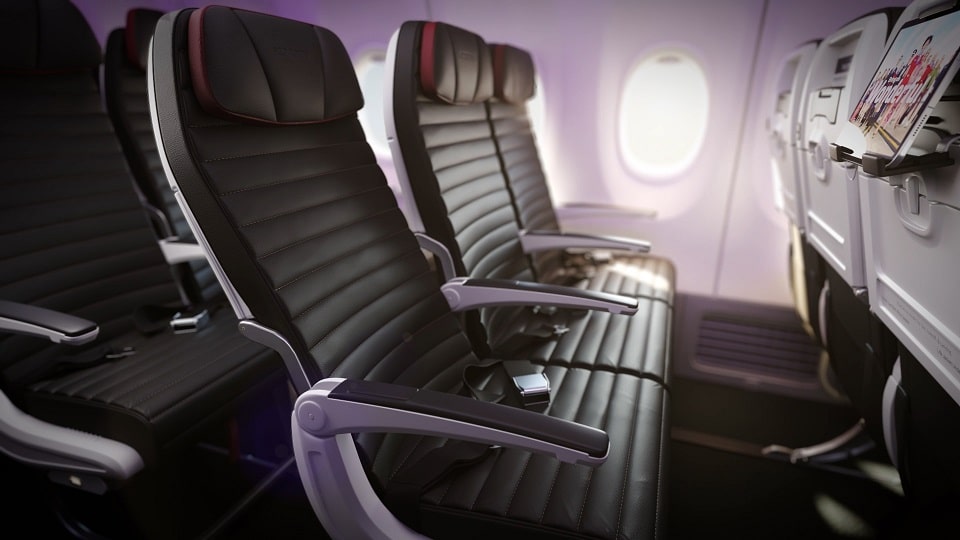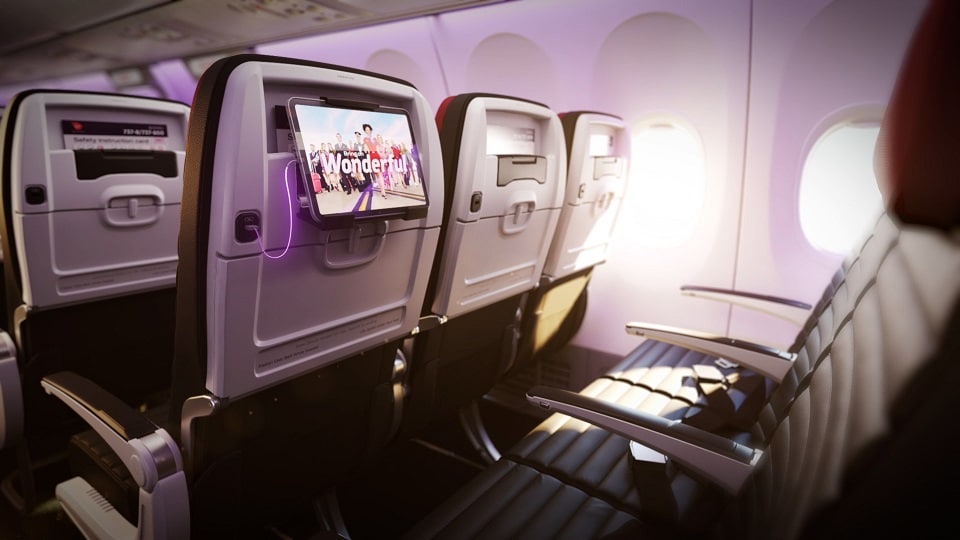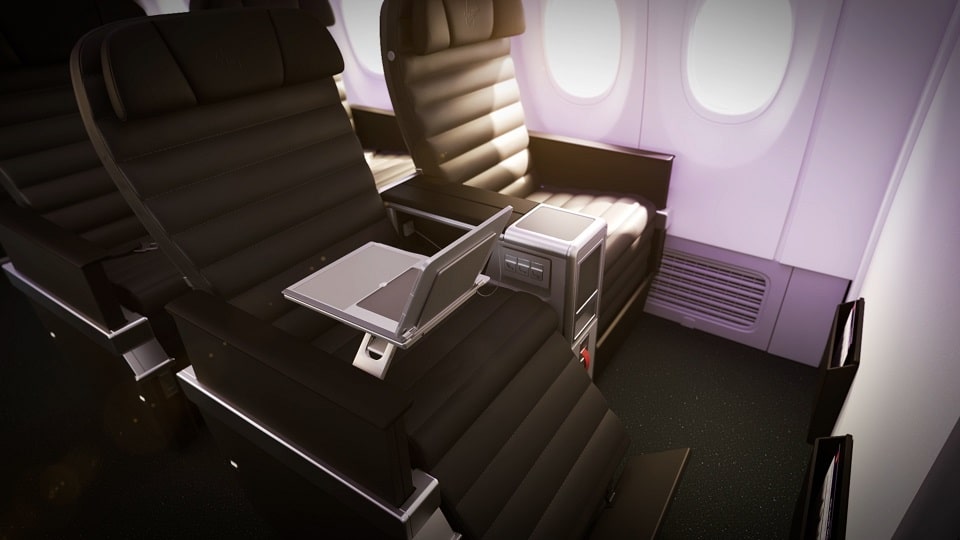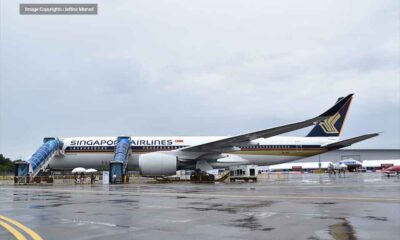Airlines
Virgin Australia unveils cabin of the future and $110 million fleet-wide aircraft upgrade
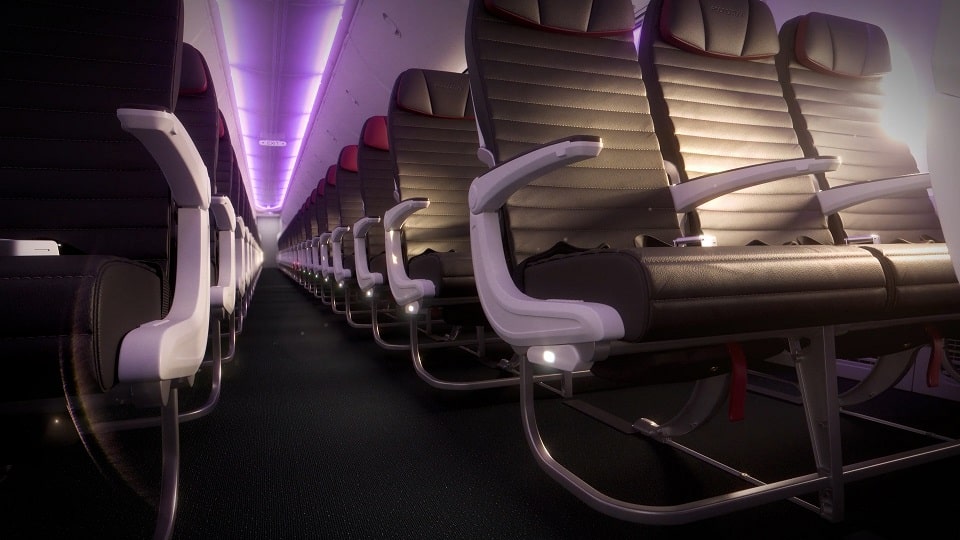
The arrival of Virgin Australia’s first fuel-efficient Boeing 737-8* aircraft, which landed on Australian soil last week, will be celebrated by more than 3,000 team employees and their families.
Woman’s ‘genius’ revenge hack for people reclining seats(Opens in a new browser tab)
The Boeing 737-8 aircraft, which just left the Boeing factory in Seattle and still has that new plane smell, represents an exciting new step in Virgin Australia’s transformation. The airline’s fleet renewal programme is well underway as it continues to work towards its net zero emissions target by 2050. Virgin Australia has ordered 33 fuel-efficient Boeing 737-8 and 737-10 aircraft, and additional fuel-efficient aircraft are expected to be delivered in the upcoming months.
With the arrival of the Boeing 737-8, Virgin Australia also unveiled its much-anticipated new Business Class and Economy cabin interior and confirmed plans to update the interior cabins on the airline’s remaining Boeing fleet, as part of an investment of about $110 million to enhance the travelling experience for passengers.
Highlight features of the new Boeing 737-8 cabin interior include:
- In-seat power for all Business Class and Economy seats.
- Larger overhead lockers, with capacity to stow up to 50 per cent more carry-on baggage (individual guest carry-on luggage limits will not increase).
- Wider Business Class seats which also feature leg rests with extendable footrests, storage compartments, tablet/device holders and water bottle holders.
- A new Economy seat design, featuring a ribbed backing to elevate comfort and ergonomics.
- A personal tablet/device holder for all Economy seats, making it easy to view Virgin Australia in-flight entertainment, movies and TV shows.
The interior refresh and product upgrade across Virgin Australia’s remaining Boeing fleet will commence later this year, with the work set to be complete in the next two years, subject to operational requirements. The upgrade includes:
- Installation of in-seat power for all Business Class and Economy seats.
- Installation of new Business Class seats, consistent with the new Boeing 737-8 aircraft.
- Installation of new or refreshed Economy seats, with seat design to be consistent with the new Boeing 737-8 aircraft.
- Introduction of in-flight Wi-Fi and complimentary in-flight entertainment (via a guest’s own personal device) to majority of remaining fleet.
A brand-new design cabin divider between Business Class and Economy will also be implemented, creating a completely new seat configuration. Greater floor space in the Economy cabin and the subsequent installation of six to twelve extra Economy seats are made possible by the new divider. On all Boeing 737-800 aircraft, one Economy X row will be swapped out for Economy seating as part of the renovation. Once the cabin revamp programme is finished, the unified in-flight product will provide additional seats for passengers and a consistent customer experience on all flights operated by Virgin Australia Boeing 737 aircraft.

Airlines
Mid-Flight Chaos: Eva Air Flight Attendants Praised for Halting Brawl Over Seat Dispute
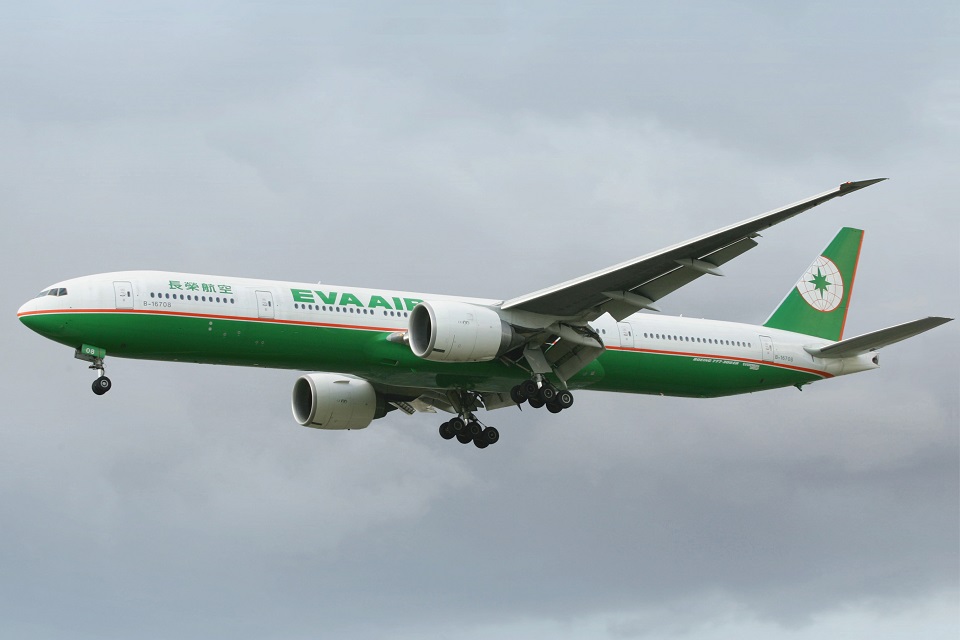
In a remarkable display of bravery and quick thinking, three female flight attendants from Eva Air have been lauded as heroes after diffusing a tense altercation between two male passengers aboard a flight from Taiwan to San Francisco.
The incident unfolded onboard EVA Air flight BR8 on May 7, just hours into the 11½-hour journey from Taiwan Taoyuan International Airport to San Francisco International Airport.
Reports suggest that the confrontation erupted over a seat dispute when one passenger sought to switch seats due to concerns over a neighbor’s coughing. In the ensuing chaos, the passenger who attempted to claim the seat was met with resistance from its original occupant, leading to a physical altercation.
Witnesses on the flight described a scene of escalating tension as one passenger attempted to strike the other, prompting the swift intervention of the cabin crew. Video footage shared on social media captured the moment when the flight attendants courageously stepped in to separate the brawling passengers, with one attendant holding back the assailant while others intervened to prevent further escalation.
Passenger Alex Pierce, who captured the incident on video, expressed his concern for the safety of the flight attendants amidst the chaos. Despite the volatile situation, the Eva Air crew remained composed and acted decisively to restore order on the aircraft.
Following the intervention of the flight attendants, the two unruly passengers were handed over to US law enforcement upon the flight’s arrival in California. Eva Air reiterated its zero-tolerance policy towards disruptive behavior and commended the crew for their exemplary response to the incident.
Airlines
Why do airplane tires cause smoke at touchdown?
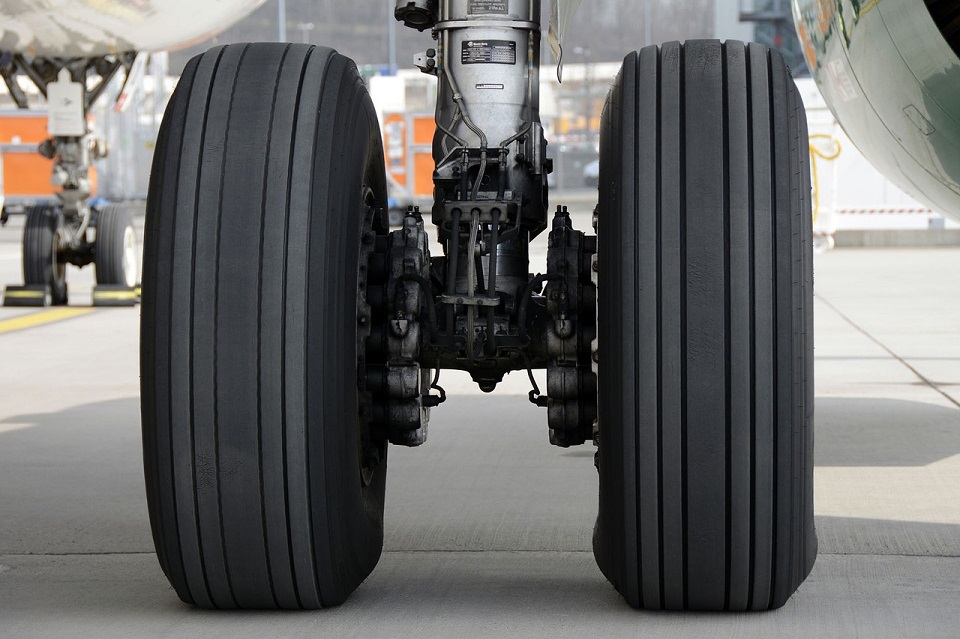
When an aircraft touches down during landing, the appearance of smoke is a common sight. This occurrence arises from a combination of factors related to the landing procedure and the characteristics of the tires themselves.
As the aircraft descends and prepares for touchdown, the tires are stationary. Upon contact with the ground, they rapidly accelerate from a standstill to an average speed of 240 to 260 km/h. This sudden burst of motion creates friction between the tires and the runway surface, resulting in the emission of smoke.
The smoke stems from the considerable heat generated by the friction between the rubber tires and the asphalt runway. This heat is sufficient to cause the rubber to almost vaporize, resembling the smoke produced when a bike tire skids against the road.
Several variables influence the intensity and occurrence of smoke during landings. The frequency of landings a tire experiences within a specific timeframe, such as within 24 hours, impacts its level of wear and tear. Airlines rigorously inspect tire conditions before each flight, promptly replacing them if any damage or signs of deterioration are detected to uphold safety standards.
The design and resilience of aircraft tires are influenced by the type of aircraft and its operational demands. For example, the tires used on an Airbus A330-200 differ in composition and load capacity compared to those designed for conventional automobiles. Furthermore, environmental factors such as runway temperatures and altitude variations contribute to tire performance.
Aircraft tires are meticulously engineered to endure the demanding conditions of takeoff and landing. They incorporate multiple layers of nylon for reinforcement and a wire core to prevent slippage on the rim. Moreover, these tires are filled with nitrogen, offering superior properties compared to conventional compressed air for aviation purposes.
Airlines
FedEx B767 Freighter Aircraft Lands in Istanbul Without Nose Gear
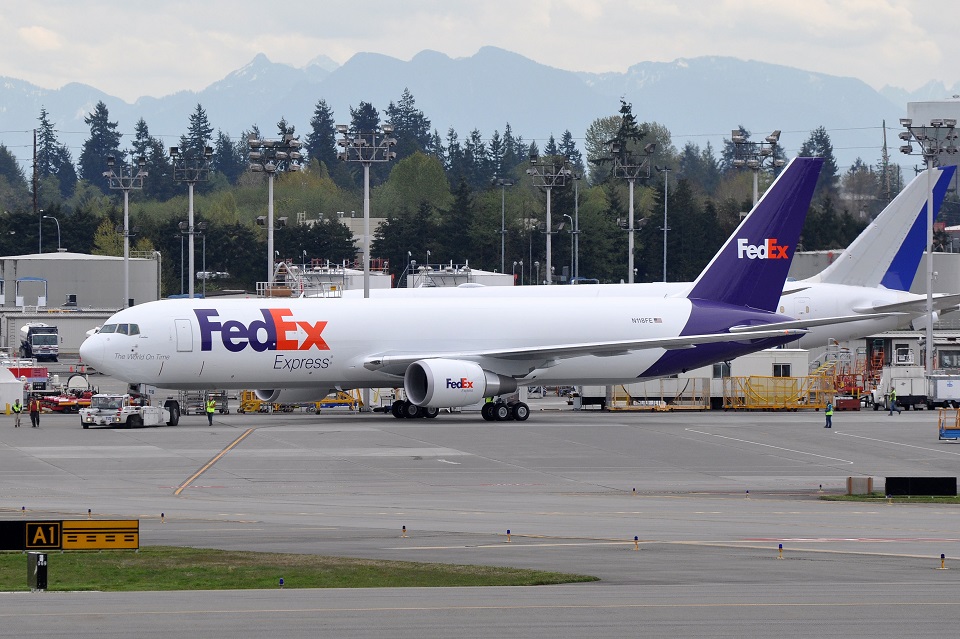
A FedEx cargo Boeing 767-300F, bearing registration N110FE, faced a tense situation as it embarked on what should have been a routine journey from Paris’s Charles de Gaulle Airport to Istanbul.
However, mid-flight, the pilots discovered a malfunction in the front landing gear, setting off a chain of events that culminated in a dramatic emergency landing at Istanbul Airport on 8th May.
According to reports from the state-run Anadolu Agency, the crew onboard Flight FX6238 promptly alerted authorities at Istanbul Airport upon realizing the landing gear failure. With nerves of steel, they maneuvered the aircraft under the guidance of the control tower, navigating the challenge of landing without the crucial support of the front landing gear.
As the FedEx plane descended toward the runway, onlookers, and social media users witnessed a nerve-wracking sight: the aircraft relying solely on its back landing gear, gently touching its nose to the tarmac in a controlled landing.
In response to the emergency, airport rescue and fire fighting teams sprang into action, ready to respond to any potential disaster. Fortunately, their services were not required as the skilled piloting and swift coordination ensured the safety of all onboard. Despite the intensity of the situation, there were no reported injuries among the passengers or crew.
The incident prompted the temporary closure of runway 16R at Istanbul Airport, but the quick action of authorities ensured that flight operations continued smoothly on other runways. Istanbul Governor Davut Gul reassured the public of the airport’s robust infrastructure and emergency response capabilities, emphasizing that such incidents are managed effectively to minimize disruptions.
Still, questions concerning Boeing aircraft quality control have been raised once again in light of the emergency landing. This event adds to the ongoing criticism of Boeing’s safety measures in light of the recent controversies concerning the company’s manufacturing operations.

